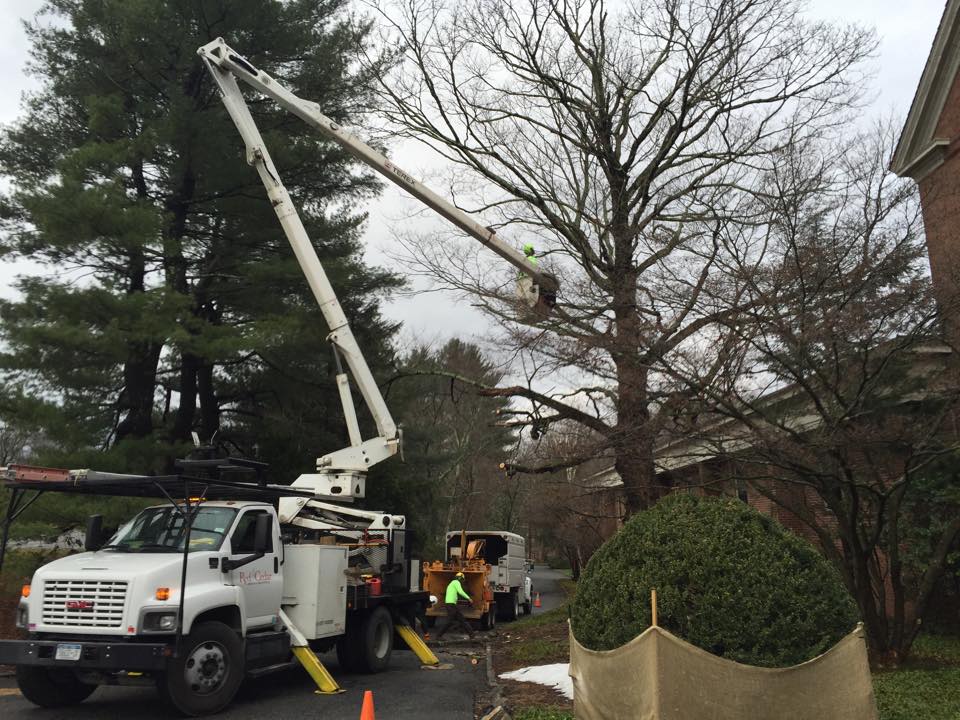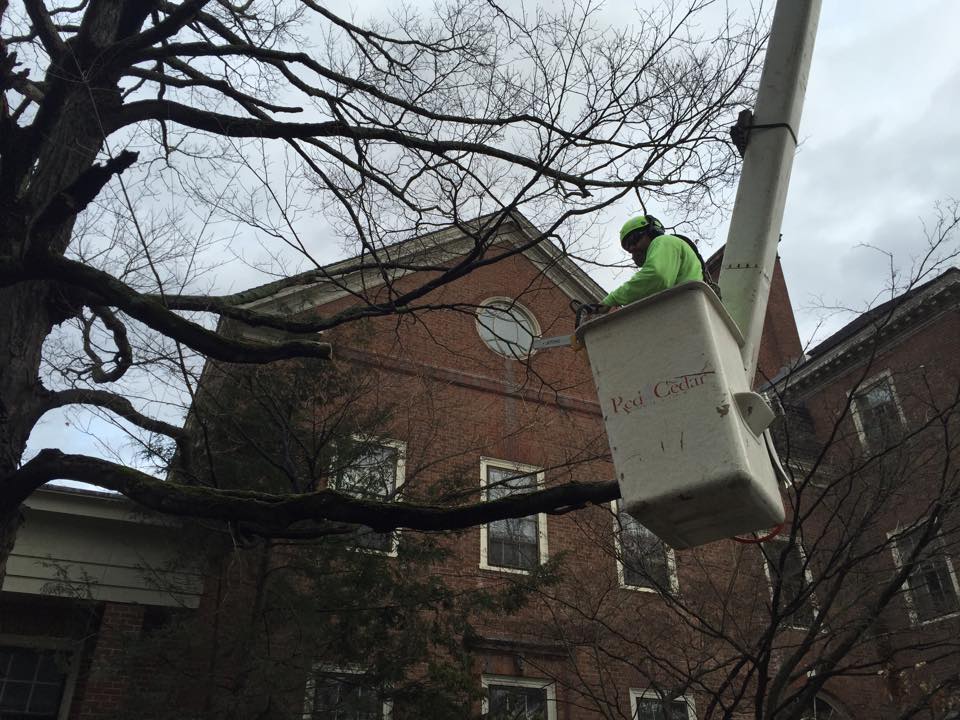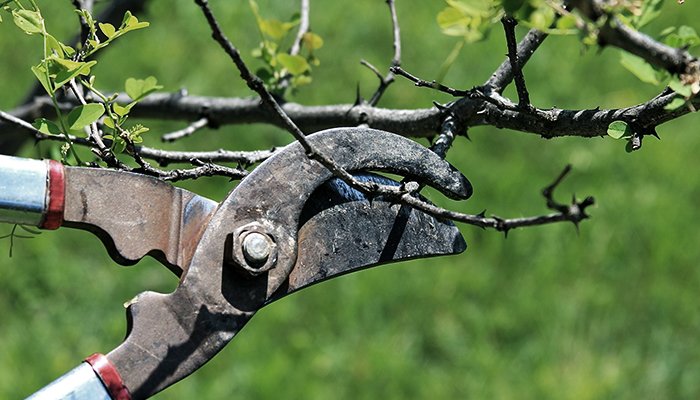You may think that tree pruning is not necessary until a tree is mature, but pruning young trees is actually very important. During a tree’s early years, it will need guidance to wrangle its wild tendencies. A good structure of the primary branches should be established while a tree is young. Tree trimming at a young age will help to train the tree to develop this strong structure. When a strong structure is developed, less corrective pruning is needed as the tree matures.
New trees will soak up sun, which can lead to multiple branches growing and competing to be the leader. While you may believe that multiple strong branches would create a strong tree, it actually weakens the tree and leads to an undefined trunk. This means that your young tree can lack the central frame strength that it needs to withstand the elements.
So, how do you train young trees through early pruning?
Goal: Pruning young trees to train them to establish a strong, central trunk with sturdy and well-spaced branches.
 This training will require your Arborist to rid your tree(s) of rival branches to maintain a single dominant leader growing upwards. This is called structural or subordinate pruning.
This training will require your Arborist to rid your tree(s) of rival branches to maintain a single dominant leader growing upwards. This is called structural or subordinate pruning.- It is important to avoid pruning back the tip of the leader and to discourage other branches from outgrowing this dominant leader.
- In some cases, a tree can develop two leaders – called codominant stems. This can lead to structural weakness. Because of this, it is best to remove or shorten one of the stems at a young age.
- While the leader is very important, so are the secondary branches. They too contribute to establishing a well-tapered and strong trunk. Keeping some will help to promote growth in your trunk’s diameter.
When should I be pruning young trees?
- When your tree is first planted, trim away broken and/or damaged branches. This will help to prevent future issues.
- Next step is to wait – yes, you should be waiting about 2-3 years after planting a tree to begin training through calculated pruning.
- After the 2-3 year mark, you will begin to see tree branches sprout and to compete for dominance. At this point, you should be calling your Arborist to train your young tree through pruning to begin establishing a strong and central trunk.
The overall strength of a branch’s structure depends on two things in conjunction with one another –
- Relative size of the branches
- Branch angles
A branch that is similar in width to the trunk (or limb that it ascends from) is more disposed to failure. Whereas, limbs smaller in diameter are less likely to fail. When discussing angles, a narrow angle or attachment can create a branch union, which weakens the attachment. This weakness at a young age can lead to failure as a mature tree.
 Do not remove too many branches – removing too much of a tree’s canopy can lead to starvation
Do not remove too many branches – removing too much of a tree’s canopy can lead to starvation- Wait until the 2-3 year mark to begin pruning young trees
- Always avoid tree topping
- Avoid removing any more than 25% of foliage during a growing season
- Avoid haphazard cuts
- Prune with a purpose
- Avoid cutting through the branch collar
- Do not use dull or unsanitized tools
- Be mindful of the season that you choose to prune in, in relation to species of tree
- Avoid DIY pruning
A lot more planning and thought goes into planting and caring for a tree than many homeowners may think. Because of this, it is important to do your research before planting on your property, and to plan for and implement the best care plan for your specific tree and its needs.
A professional Arborist and Landscaper (like those at Red Cedar) can not only help to choose the correct tree for your needs/wants and your specific property, but we can also aid in the planting of these trees, and the care plan and maintenance required after planting, to ensure it thrives. Knowing when to begin pruning young trees is important in establishing strength and health. Let the professionally trained staff at Red Cedar help ensure that your trees are taken care of and strong from a young age! Contact us today for your free tree consultation.


